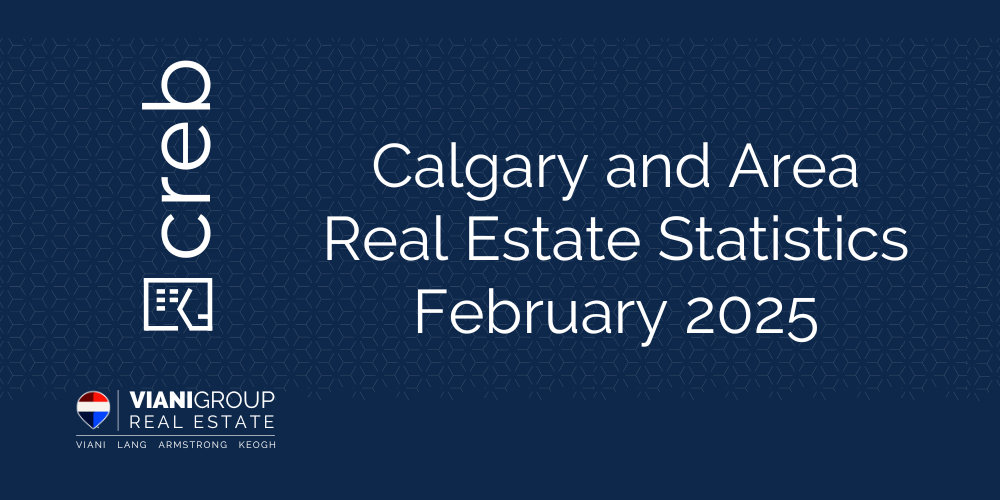What Happens When You Sell a House with a Mortgage in Canada
There are a variety of reasons that you might consider selling a house with a mortgage. The most common scenarios are when you need to move to a new location for a new employment opportunity, your family situation has changed with the addition of children or when your children head off to college or university or move out altogether. In each case, if your home no longer meets your needs, you may be contemplating breaking your mortgage contract. If you are considering selling a house with a mortgage, ensure you understand all the costs associated with breaking the mortgage contract.
The Costs of Breaking the Mortgage Contract
The cost of selling your home before the mortgage term ends and breaking the mortgage contract will depend on your mortgage type. If you chose your mortgage type without really understanding the ins and outs of an open versus closed mortgage, it’s time to get up to date on what you bought into when you signed on the dotted line.
Open Mortgages
When it comes to selling a house with a mortgage, if you have an open mortgage, you can sell your home without paying penalties for breaking the mortgage contract. That’s because an open mortgage is designed to provide greater flexibility without incurring financial penalties. While open mortgages still have a term, borrowers don’t have to wait until the mortgage matures to make changes.
You can make additional mortgage payments on a month-to-month or year-to-year basis without limitations, change your mortgage payment frequency, refinance, pay off, or break your mortgage before the end of your open mortgage term, all without incurring any prepayment penalties whatsoever.
However, the tradeoff for all this flexibility is that open mortgages come with higher interest rates than closed mortgages. Lenders charge a premium for allowing borrowers to break or change their mortgage agreement without penalties.
Open mortgages are usually chosen by homeowners who anticipate being able to make larger prepayments or pay off their mortgage sooner or whose life circumstances may require them to sell their homes before the end of the mortgage term.
Closed Mortgages
If you chose a closed mortgage for the lower interest rate or because you had no intention of selling before your mortgage term expired, you may be facing substantial penalty fees associated with wanting to break the mortgage now.
A closed mortgage has set conditions for the duration of the mortgage term. Once the mortgage contract is signed, the terms and conditions can’t be altered without incurring prepayment penalties.
Closed mortgages are known for their lack of flexibility. Lenders may offer some prepayment privileges, such as the ability to pay a certain percentage of the principal each year without penalty, but if you want to prepay more, pay off the mortgage entirely, refinance, or change the mortgage before the end of the term, a prepayment penalty will be levied.
Lower interest rates are the tradeoff for this lack of flexibility. Lenders are willing to provide more favourable mortgage interest rates on a closed mortgage in order to deter borrowers from breaking the mortgage contract or making additional prepayments.
Closed mortgages are usually chosen by homeowners who expect to remain in their recently purchased home for at least the duration of the mortgage term. This option is also optimal if you don’t anticipate making prepayments above and beyond what’s allowed in the mortgage agreement.
As indicated, if you have a closed mortgage, there will be penalties for selling your home before the term is up.
The highest cost will be the prepayment penalty – the fee for breaking the mortgage contract. The prepayment penalty can be thousands of dollars and will vary based on the terms of your mortgage contract. There will also be administrative fees, appraisal fees, reinvestment fees and a mortgage discharge fee, which removes the charge on your current mortgage and registers a new one.
You may also have to repay any cash-back or home equity line of credit you received when you got your mortgage. These fees can make breaking a mortgage before the term ends VERY pricey.
Options for Breaking a Mortgage Contract
There are options if you are thinking about selling a house with a mortgage. Some mortgage lenders may allow you to extend the length of your mortgage while beginning a new mortgage in a Blend-and-Extend option. In this option, the interest rates for the old and new terms are blended, and you won’t have to pay the prepayment penalty. However, you still may need to pay administrative fees.
Unfortunately, not every mortgage lender offers this option, so the only other choice is to break the mortgage contract. In this case, you may get a lower interest rate on your new home, but you will have to pay a prepayment penalty for breaking the contract. If you have a choice in whether you sell your home before the mortgage term ends, ensure that the benefits of breaking the contract outweigh the costs of paying the prepayment penalty and any other associated fees.
Pros and Cons of Selling a House With a Mortgage
It can be tempting to break your mortgage or sell your home if you see a lower interest rate or a home that better meets your needs in the market. But in some cases, you may not have much of a choice in the matter, like if you have to move for work.
Here are some of the pros and cons of selling a house with a mortgage and breaking the contract:
Pro: You may be able to get a lower interest rate and pay off the mortgage faster if you keep the payments the same. When moving into a new house, it is possible that you could get a lower interest rate than on your previous mortgage, and if you budget your mortgage payments as if you are paying into your old mortgage, then you could pay off your new mortgage early.
Con: You could end up paying more in the long run because of fees and prepayment penalties. The fees for breaking a mortgage before the term ends are very high, and even if you make higher payments on your new mortgage, there is no guarantee that the interest saved will be enough to cover the penalties. However, your mortgage advisor can run the calculations for you.
Pro: You may be able to lock in at a lower interest rate for the new mortgage term. Selling your house allows you to look for a lower interest rate for your new home, saving you money in the long run.
Con: You may no longer qualify for a mortgage under current economic conditions. Times are tough, and it could be that you are selling your house not to buy a new one but to move into a rental. If this is the case, again, it’s vital to ensure that the benefits of selling your home early outweigh the costs of the penalties.
What Mortgage-Breaking Penalties May Look Like
Many homeowners who decide to post a for-sale sign on their front lawn might be surprised to learn that they face a sizeable mortgage-breaking penalty, mainly because of how interest rates have evolved since 2019. According to Canada Mortgage and Housing Corporation (CMHC), in June 2019, the average conventional fixed mortgage lending rate for a five-year term was 4.23 per cent. By June 2021, it had fallen to 3.26 per cent. In October 2024, it surged to 6.49 per cent, then dropped back to 3.99 per cent in November 2024.
In order to capitalize on higher interest rates, mortgage lenders can use various techniques to impose penalties on borrowers before their loans expire. Industry experts assert that the most common formula banks use is the difference between the lender’s present rate and the contractual rate, which is also referred to as an Interest Rate Differential (IRD).
If you have a closed mortgage with a variable rate, you will usually be forced to pay three months of interest. If you have a closed mortgage with a fixed rate, you will either pay three months’ worth of interest or the IRD amount, whichever is GREATER.
If you’re considering selling a house with a mortgage, you need to do the math:
Suppose you bought your property when interest rates were high, using a fixed-rate/closed mortgage option with a five-year term at 6.59 per cent. Let’s also suppose that you still have 24 months left in the term, and you still owe $300,000 but want to break the mortgage and sell now.
Three Months’ Interest Calculation:
Outstanding balance of your mortgage:
$300,000
Multiply the outstanding balance of your mortgage by the annual interest rate on your mortgage:
$300,000 x 6.59% = $19,770
Divide the answer by 12 months to get the monthly interest payable per year:
$19,770/12 = $1,647.50
Multiply the answer by 3 (months)
$1,647.50 x 3 = $4,942.50
Total Three Months’ Interest is $4,942.50
Interest Rate Differential Calculation:
Current mortgage interest rate:
6.59%
Current Interest Rate on a 3-Year Term:
4.74%
Rate difference between your mortgage rate and current interest rate:
1.85%
Multiply your mortgage balance by the rate differential to get the interest differential for 1 year:
$300,000 x 1.85% = $5,550
Divide this amount by 12 to get the amount for 1 month:
$5,550.00/12 = $462.50
Multiply this amount by the number of months left in your term:
$462.50 x 24 = $11,100
Total Interest Rate Differential Penalty is $11,100!
In this case of a closed/fixed rate contract, the estimated penalty for selling a house with a mortgage, is $11,100 – since it is the greater of the results for the Three Months’ Interest versus Interest Rate Differential calculations – a sizeable chunk of change!
To lighten your financial load, you can endeavour to trim your penalties by taking advantage of prepayment features. You can either pay a portion of the mortgage early without incurring penalties or max out your prepayment options, meaning you will lower the total balance without triggering added costs.
In the end, sellers should consider a couple of things before selling their home before mortgage expiration:
The first is requesting a payoff quote. Speak with your mortgage lender and obtain a payoff amount, which is the amount owed on the loan.
The second is calculating your home equity. How much equity do you have in your home? This could play an important role in your decision-making as if your property has substantially appreciated since you bought it and there’s a significant difference in the latest market value of your home and the remaining mortgage balance – even a large penalty like the one we calculated above could be justifiable.
When Do You Stop Paying a Mortgage When Selling a House?
If you pay off your mortgage BEFORE you sell your house, your mortgage payments stop when you pay off any applicable penalties, administration fees, appraisal fees, reinvestment fees and mortgage discharge fees.
If you break your mortgage while still owing, once you sell, part of the monies you receive will be used to pay off any relevant penalty fees, plus the remainder due on your mortgage, effectively ending the monthly payments on your old mortgage.
Additional Penalties for Selling a House Before 1 Year in Canada
While principal residences in Canada are not subject to capital gains when sold, investment properties do not share this benefit. So, if you’re considering selling a house with a mortgage – and it happens to be an investment property or a secondary home – if you sell it within a year of purchasing it, you’ll not only pay penalties for breaking the mortgage but you’ll also owe capital gains tax on 50 per cent of your profits.
Gather All the Information
Before selling a house with a mortgage, make sure you understand the costs associated with breaking your mortgage contract. It’s also a good idea to speak with a mortgage adviser, as they can provide you with valuable information needed to help navigate selling your home before the mortgage term ends.








